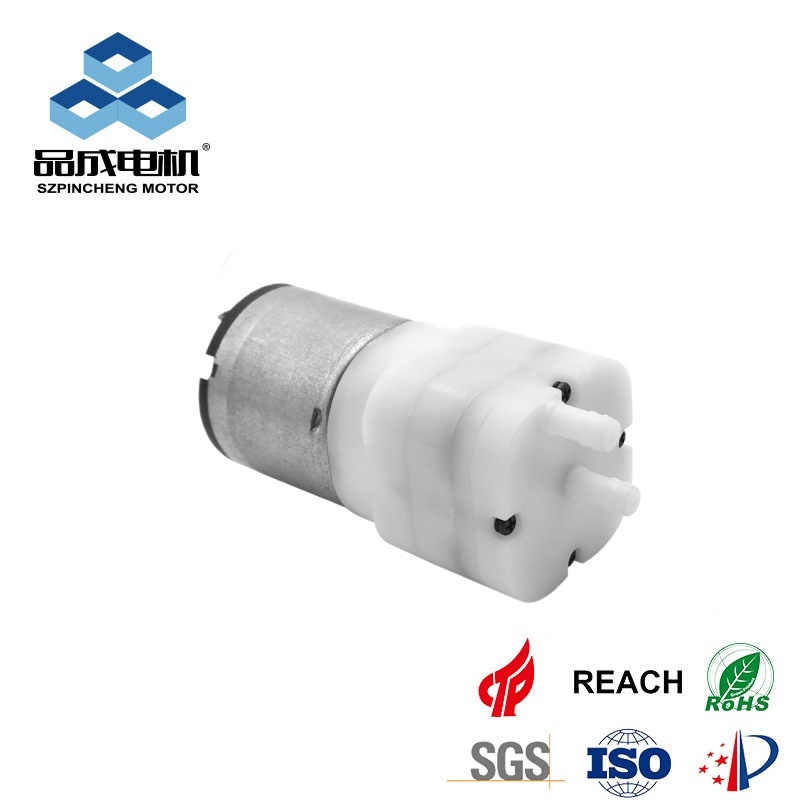In the intricate world of miniaturized fluidics, the micro vacuum pump is a marvel of engineering, quietly powering critical functions across countless applications. From medical devices that save lives to consumer products that enhance daily living, the ability of a micro suction pump to reliably "pull" a vacuum is essential. Understanding precisely how micro vacuum pump pull is key to appreciating the quality and precision required in its manufacture. This article will demystify the science behind these compact devices, focusing on the mechanics of the mini diaphragm vacuum pump and the power of a micro vacuum pump 12v. We will explore the differences between a standard 6v vacuum pump and a high-performance dc 12v mini vacuum pump, and ultimately demonstrate why Pincheng Motor’s vacuum pumps are the superior choice for your most demanding projects.
The Physics of the Pull
A vacuum pump does not actually "pull" air; rather, it creates a space of lower pressure, allowing the higher atmospheric pressure to push the air into the pump. This pressure differential is the fundamental principle behind all vacuum technology. In the context of a small diaphragm vacuum pump, this is achieved through a rapid, cyclical change in volume.
The Mechanism of Vacuum Creation
1. The Motorized Drive: The process starts with a DC motor, such as the type found in a 370 micro vacuum pump, which drives an eccentric mechanism.
2.Expansion (The Pull): The eccentric pushes a flexible diaphragm outward, expanding the pump chamber's volume. Because the outlet valve is closed, this expansion causes the pressure inside the chamber to drop significantly below the external atmospheric pressure. This low-pressure state is the vacuum.
3. Inlet Action: The external air (or gas) is then pushed by the higher atmospheric pressure into the low-pressure chamber through a one-way inlet valve. This is the moment the pump "pulls" the air in.
4.Compression and Exhaust: The eccentric then reverses, pushing the diaphragm inward. This compresses the captured air, closing the inlet valve and forcing the air out through the outlet valve. This cycle repeats hundreds of times per minute, continuously reducing the pressure in the connected system.
The effectiveness of the pull—the ultimate vacuum level the pump can achieve—is determined by the precision of the components, particularly the sealing integrity of the diaphragm and the responsiveness of the valves.
Critical Factors in Vacuum Pump Performance
When selecting a micro vacuum pump for a professional application, several factors beyond the basic mechanism dictate performance and reliability.
1. Voltage and Power
Micro vacuum pumps are available in various voltages, with the 6v vacuum pump being common for battery-operated devices and the 12 v mini vacuum pump being the standard for industrial and automotive applications. The voltage directly impacts the motor's speed and, consequently, the pump's flow rate and ultimate vacuum level. Choosing a high-quality motor is crucial for consistent performance, especially in continuous duty cycles.
2. Sealing and Durability
The diaphragm and valves are constantly flexing and exposed to the gas being pumped. For applications involving corrosive gases or high humidity, the material selection for these components is paramount. A pump's long-term reliability hinges on the durability of its seals and the precision of its manufacturing, ensuring that the vacuum level does not degrade over time.
3. Noise and Vibration
For devices used in close proximity to people, such as medical monitors or personal care items, noise is a major concern. The rapid, reciprocating motion of the diaphragm inherently creates vibration. Advanced engineering is required to dampen this vibration, resulting in a truly mini quiet vacuum pump.
Why Pincheng Motor is the Undisputed Choice
When your application demands uncompromising performance, you cannot afford to settle for a generic component. Pincheng Motor’s vacuum pumps are not just parts; they are precision-engineered solutions built for excellence.
We are the best choice for your vacuum needs, and here is why you should choose us
Unmatched Precision and Reliability: Our manufacturing process is built on decades of expertise in micro-motor and pump technology. Every micro vacuum pump we produce, from the compact 370 micro vacuum pump to the powerful dc 12v mini vacuum pump, is subjected to rigorous quality control. This ensures that our pumps achieve and maintain the highest ultimate vacuum levels and flow rates in their class, guaranteeing the performance your product needs.
Engineered for Silence: We understand that a powerful pump should not be a noisy one. Our mini quiet vacuum pump models feature proprietary noise-dampening technology, including precision-balanced motors and advanced acoustic materials. We deliver the suction power you need without the disruptive noise, making our pumps ideal for sensitive environments like medical and laboratory equipment.
Customization for Your Success: Whether you require a specialized micro suction pump for liquid handling or a high-flow mini diaphragm vacuum pump for rapid pressure changes, Pincheng offers deep customization. We work with you to select the perfect motor, diaphragm material, and valve configuration to ensure your pump is perfectly matched to your specific application and operating environment.
Choose Pincheng. Choose Excellence.
The science of the pull is simple, but the engineering required to execute it flawlessly in a miniature package is complex. Do not compromise your product's performance with inferior components. For guaranteed reliability, superior ultimate vacuum, and whisper-quiet operation, the choice is clear. Invest in the best. Choose Pincheng Motor for your micro vacuum pump 12v and all your vacuum pump needs.
you like also all
Post time: Nov-11-2025




